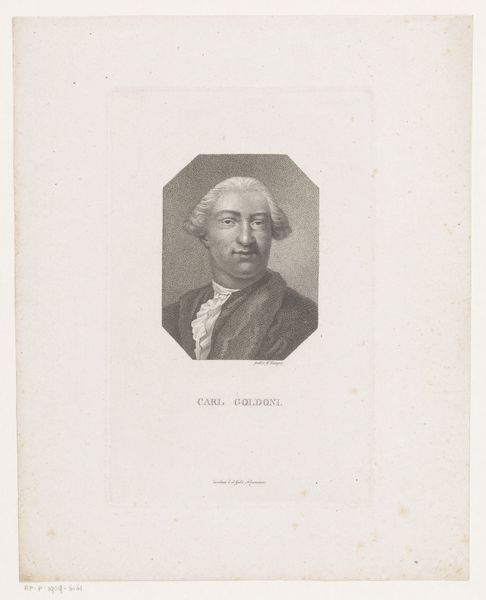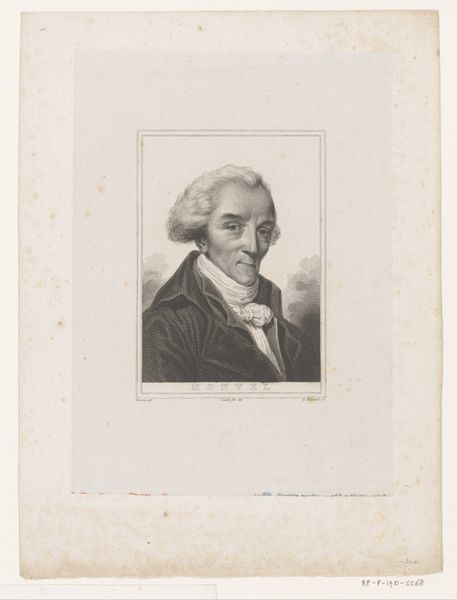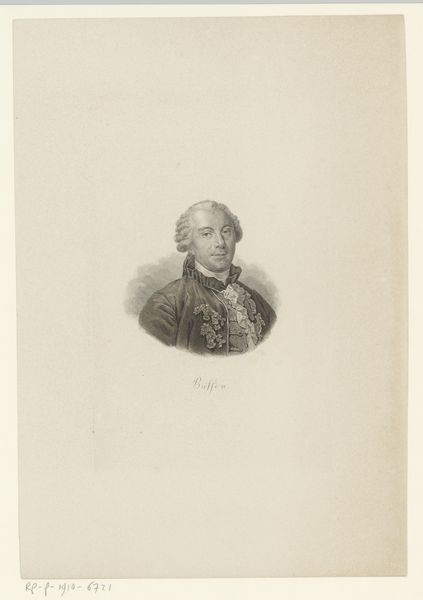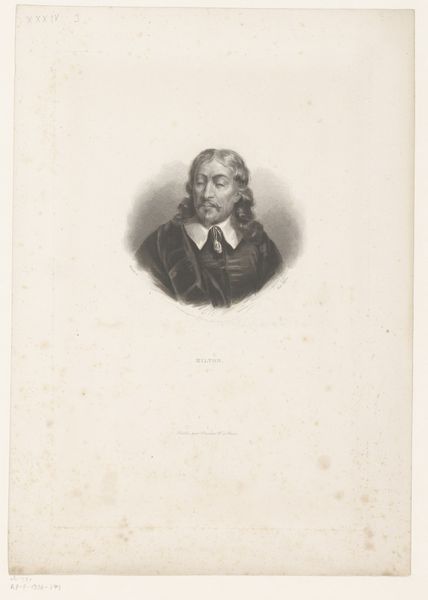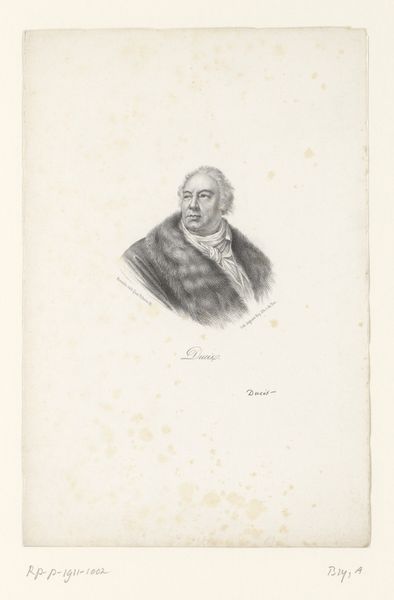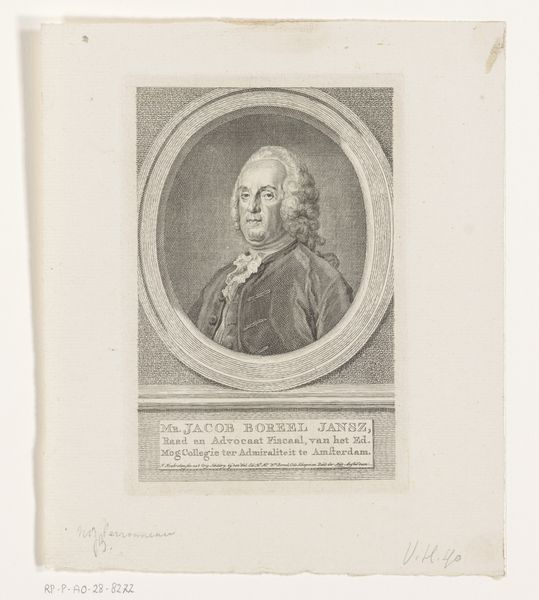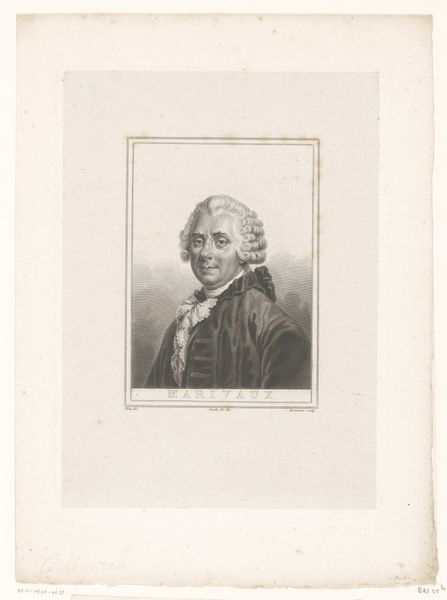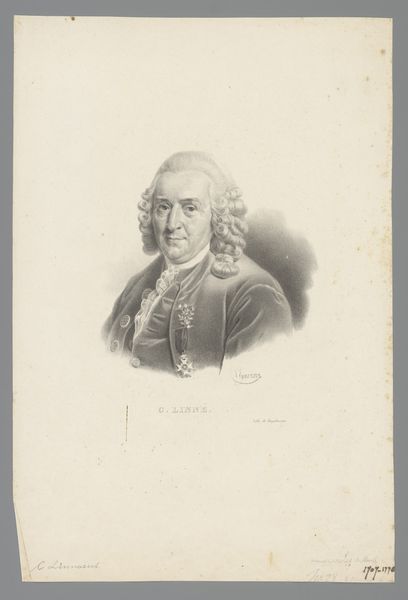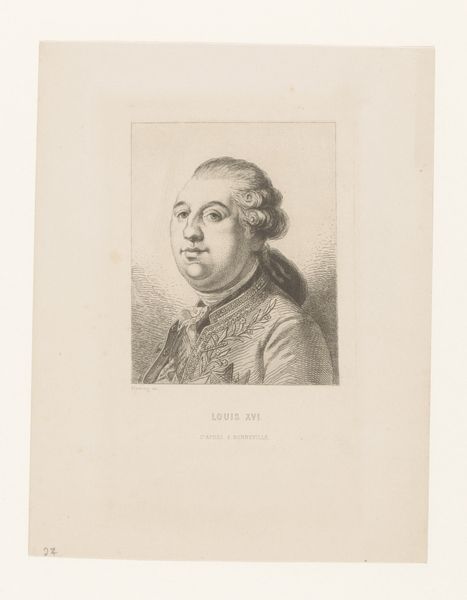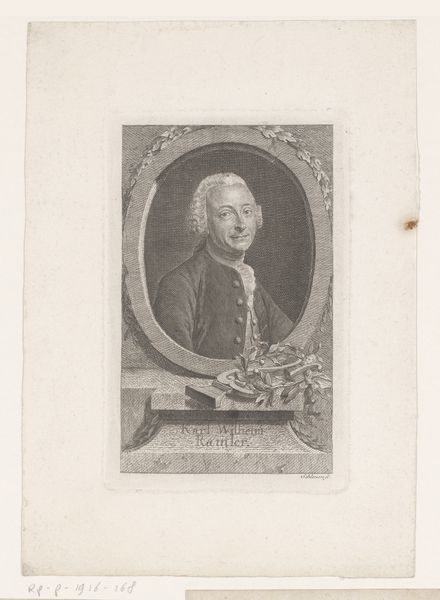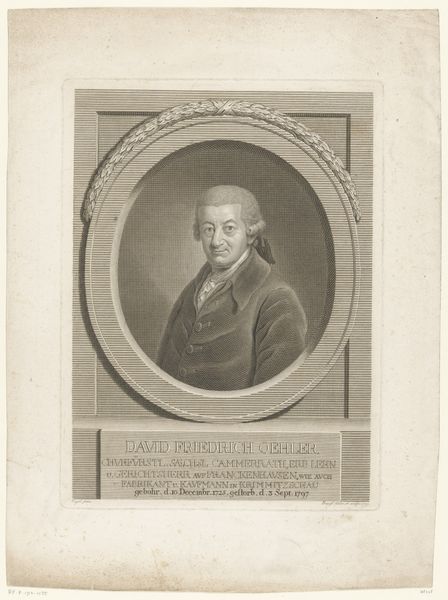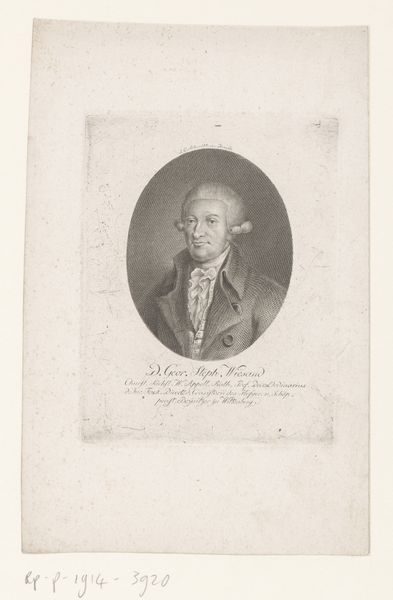
drawing, paper, pencil
#
portrait
#
drawing
#
neoclacissism
#
paper
#
pencil
#
academic-art
Dimensions: height 298 mm, width 213 mm
Copyright: Rijks Museum: Open Domain
Editor: This is a pencil drawing called "Portret van Jean-François Ducis" made around 1827-1830 by Bernard Romain Julien, housed here at the Rijksmuseum. The fur collar around his shoulders feels really luxurious. What strikes you most about this piece? Curator: It is indeed luxurious. More importantly, how does the portrayal of Ducis, specifically his clothing and its details, reinforce or challenge societal expectations of status and intellect in post-revolutionary France? Is this an attempt to reassert pre-revolution ideas of nobility by association, through visual markers like luxurious garments? Editor: That's a great point. I hadn’t considered the political implications of something like a fur collar. So, it's not just about wealth but also about subtly referencing an older order? Curator: Precisely. Think about how artists working after the French Revolution navigated depicting individuals. Portraiture became a powerful tool for either solidifying the new order or, conversely, hinting at a nostalgic return to previous structures. Is this portrait participating in a quiet kind of political debate about what kind of French society is acceptable now? Editor: I see. The artist is making choices that signal something about Ducis and potentially about the artist's own political leanings as well. Did the Rijksmuseum play a role in either solidifying new power structures, or in expressing quiet forms of resistance or critique? Curator: That’s an excellent question. The establishment and growth of national museums such as the Rijksmuseum was fundamentally a part of nation-building. What kinds of works are actively collected? Whose narratives were considered to be “national” narratives? How was art employed in forging the very idea of “Dutchness,” as it were? Thinking along those lines is the way we can best begin to think historically about the institution’s practices and assumptions. Editor: This has totally changed how I see portraits. Thanks so much! Curator: My pleasure! It's always fruitful to consider how art exists within a larger framework of social and political influences.
Comments
No comments
Be the first to comment and join the conversation on the ultimate creative platform.
